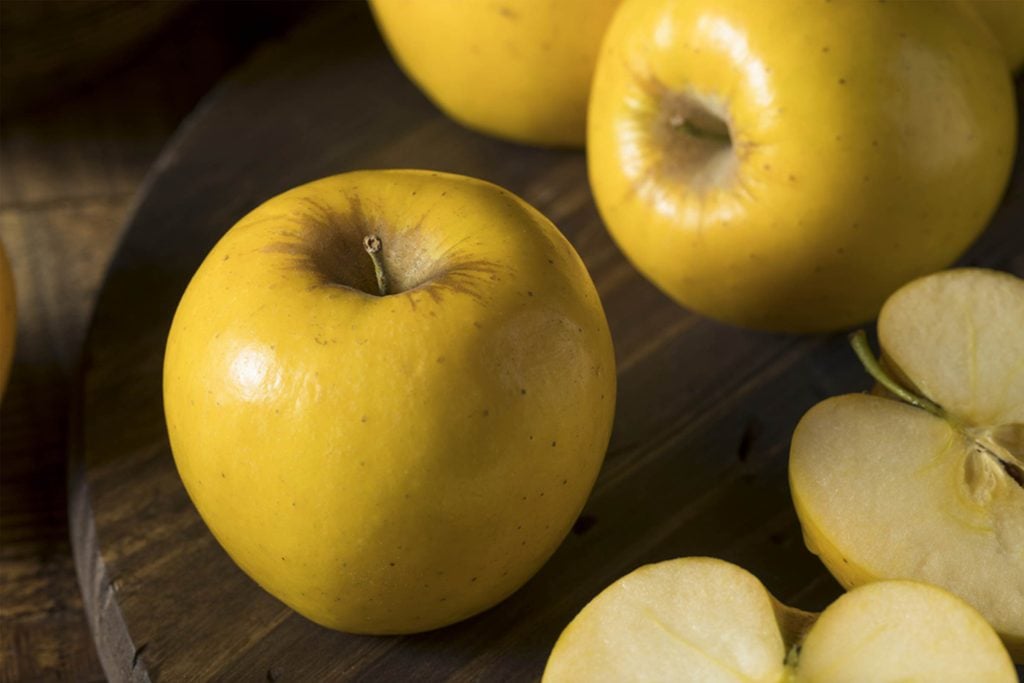Opal Apples Never Brown—But Are They Safe to Eat?
Updated: Aug. 14, 2019
Believe it or not, Opal apples are actually very similar to other kinds of apples.

Apples are packed with amazing health benefits: weight loss, heart protection, lowering your risk for diabetes, and many more. Not only are they good for you, but they taste yummy too! The only problem is, the slices we pack for lunch are always an unappetizing brown by the time we dig them out of the fridge. Apple slices turn brown because enzymes called polyphenol oxidase (PPO) in the fruit’s flesh react with oxygen in the air. The chemical reaction makes the fruit go from a soft yellow to a rotten-looking brown, according to Scientific American. If you don’t like eating brown apples, try this five-minute hack that keeps apples from browning.
Fortunately, there is an apple you can pick up at the grocery store that won’t turn brown for a while—the Opal apple. Opal apples are naturally low in PPO, which means they’ll stay crisp and white long after you cut them. Serious Eats even tested the claim, and after sitting out unwrapped for more than six hours, the apple had barely any browning. And here’s why apples have those little spots on their skin, too.
You may be wondering if genetic modification plays a role in keeping the fruit’s browning flesh at bay. In fact, you may even ask yourself if Opal apples are safe to eat because they can do something most apples can’t. But, according to the Opal website, they’re the first apple to be verified by the Non-GMO Project, the gold standard for certification. “We understand that some consumers are concerned about genetically modified organism (GMO) products and felt it was important to clarify [that] the natural non-browning characteristic is just that—natural,” said Keith Mathews, CEO of FirstFruits Marketing, in a press release.
The Opal apple is actually a cross between a Golden Delicious and a Topaz apple, and it’s crisp with a sweet, floral flavor. Plus, it still has all the health benefits that every other apple has. Although FirstFruits Marketing does not publish nutrition facts for the Opal apples (nor is it required to), the yellow apple’s nutrition value should be similar, if not the same, to every other apple at the supermarket. According to the United States Department of Agriculture, the average large apple of any kind typically has 23 grams of sugar, 5.4 grams of fiber, and less than 1 gram of protein and fat.
Even though there’s no published data on Opal apples and their antioxidant content, it’s safe to assume that, much like their apple cousins, their white flesh is still a good source of chlorogenic acid, the only antioxidant that’s found in greater concentrations inside the fruit instead of on the peel. For tested apple varieties, the flesh still contained about 84 percent of the fruit’s total antioxidant content on average. And Opal apples may even preserve the antioxidants better than other apples simply because they don’t brown as quickly. The oxidation process actually steals some of the apple’s antioxidant content. If you’re now considering hitting up the supermarket for some Opal apples or another kind, you may want to head for the orchard instead—here’s the gross truth about supermarket apples.
[Source: Extra Crispy, Superfoodly]